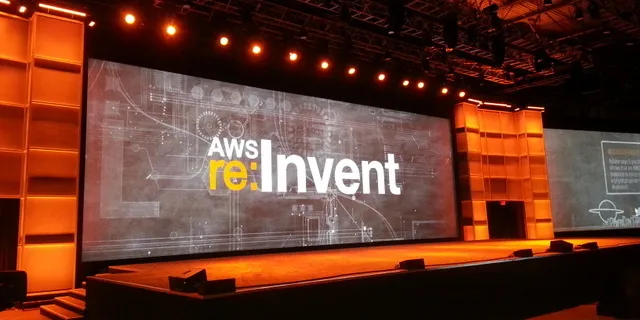AWS re:Invent – Day 3 – Live from Las Vegas
The cloud frenzy continues at Las Vegas with the AWS re:Invent entering its third day. Dr. Werner Vogels took the center stage as the keynote speaker. As the CTO, Werner had a heavy dose of technology while articulating how the key attributes to AWS cloud help the customers achieve performance, security, availability, cost efficiency and scalability.
Werner shared the secret behind AWS’ ability to rapidly innovate and improvise their services, which he called as ‘working backwards from a customer’. This emphasizes on the laser focus that each team has on the customer needs and requirements. Every team that is tasked to ship a new service starts with a hypothetical press release, which articulates the core value proposition as it would be articulated to the media and customers. As a second step, the team then writes FAQ of the service that addresses the key concerns and questions about the service. The next step is to define the user interaction for the service followed by the framework that is used to generate the user manual. This is a big deviation from how traditional software companies design and develop their software. As an example, Werner put the screenshot of the hypothetical press release for Amazon Redshift on the giant screens at the venue.

Yesterday, Andy Jassy highlighted the enterprise case studies to drive the point that AWS is being leveraged by the large organizations. Today was all about startups that are building innovative applications on top of AWS. Werner Vogels invited Parse, Airbnb and Dropcam on stage to talk about their experience of using AWS. It was fascinating to see how AWS is enabling the startups to scale without ever worrying about infrastructure.
Today’s keynote had a series of announcements related to compute and databases. Some of them were the anticipated and some were the most unexpected additions to the stack.
The most significant announcement came in the form of Amazon Kinesis. It is a fully managed service for real-time processing of streaming data at massive scale. Amazon Kinesis can collect and process hundreds of terabytes of data per hour from hundreds of thousands of sources, allowing you to easily write applications that process information in real-time, from sources such as web site click-streams, marketing and financial information, manufacturing instrumentation and social media, and operational logs and metering data. There was a pretty cool demo of streaming the live Twitter feed to Amazon Kinesis which then feeds Redshift, RDS and DynamoDB for analysis and queries.
Amazon RDS now supports the popular open source database, PostgreSQL. After MySQL, PostgreSQL is the most commonly used database in the open source world. This release supports all the major features of Amazon RDS including Multi-AZ, PIOPS, VPC, Snapshots and Cross-Region Snapshot Copy. The best thing is that the new flavor of the database is available in all the regions!
Amazon EC2 got a new generation of instance types called the C3 family. The C3 instances feature per-core performance that delivers better performance than any of the other EC2 instance types, at a price-performance ratio that will make them a great fit for many compute-intensive workloads. The C3 instances are available immediately in the Northern Virginia, Ireland, Singapore, Tokyo, and Sydney Regions.
Apart from these, Amazon Redshift gets the cross-region snapshot feature, which will make it easy to migrate data from one region to another region. Amazon RDS will add the support for creating Read-Replicas across regions, which will make it easy to enable geo-routing for the applications deployed in multiple regions sharing the same data.
Amazon is moving up the stack and with the announcements at re:Invent, it has raised the bar further. It is clear that AWS is no more a typical Infrastructure as a Service provider but has turned into a holistic cloud service provider. I am already curious to see what Amazon has in store for next year. I wouldn’t be surprised if they announce business applications like CRM, ERP and SCM as affordable services marking the entry into the SaaS world.
Overall, the event is very well structured and it is obvious that this has become a forcing function for the internal AWS teams to launch their services. Having delivery 200+ updates already, AWS announced half-a-dozen new features that only widen the gap with the competition.
Learn more about how your startup can leverage the cloud. Attend the global AWS Cloud Kata learning sessions, brought to India by YourStory. Click here to know more.







